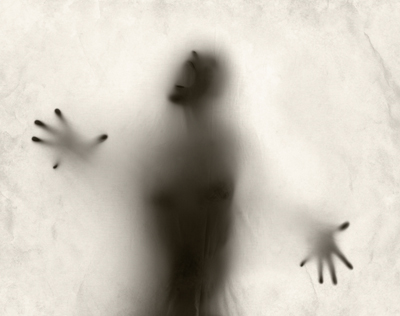Very few poems are written from the standpoint of universal feelings. On Another’s Sorrow is one such poem. Readers will find this On Another’s Sorrow: Analysis interesting since it highlights human psychology and Blake’s understanding of God! Without these, I think it would be difficult to understand the voice of the poet.
The poem goes closely with Saint Matthew’s Gospel, where he describes how eager God is to alleviate us from pain, suffering, and boredom. However, Blake’s notion of God is way different and is addressed in detail later in this analysis.
On Another’s Sorrow: Analysis
The poem ‘On Another’s Sorrow’ illustrates the various explicit sufferings of man. The poem is a symbolic illustration of the fact that God or Christ can never be indifferent to human suffering. In ‘the world of Innocence,’ each one of us immediately responds to the feelings of the other, may it be pain or joy. Thus, the poem focuses on human brotherhood or a ‘man to God’s kingship, which can be felt and realized when one rushes to alleviate the sufferings of the other. This made the poet repeatedly say, “We cannot be indifferent to the woes of our neighbors.” We weep with them, feel sorry for their distress and stand by them in days of hardship. Blake provides rich examples to further emphasize his opinion. The case of a father whose affable bond stirs the pain in his heart on seeing the child in agony. No mother can be stoic to the pain of her child.
Blake, in On Another’s Sorrow, presents a highly interconnecting human world. Even God seems to be invariably responsive to the cries and longings of his subjects. Here, Blake projects the revolutionary life of Christ and portrays his sacrifice as an example to further epitomize the poem. Whenever we bring to our picture the sight of Christ’s crucifixion and his last words, the theme of the poem becomes vivid and clear. Christ compassionately gave up his life to liberate us from the miseries and sorrows. The poem is more a lesson of humanity and upholds one of the highest human principles- ‘PITY.’
The Virtue of Pity Expressed:
In the poem ‘Divine Image’, we did realize pity as one of the divine virtues that God endowed to human beings. Pity also had a prominence in the poem, ‘A Dream,’ and now, in ‘On Another’s Sorrow,’ we finally reach the highest level of the importance of pity. Through his “Songs of Innocence,” Blake presents a prominent picture of the realm of innocence where Pity is a dominant force. Every innocent creature feels pity. It‘s a pity that is instrumental in developing the feeling of innocence.
On Another’s Sorrow: Theme
The Human Psychology
Blake introduces a complex perception of individual sorrow.
“Can I see another’s woe,
And not be in sorrow too?”
The question is marked with psychological significance and is instrumental in understanding the behavior patterns in humans. Are we desensitized to other’s sorrows?
The poet firmly says,
“No, no! never can it be!
Never, never can it be!”
Standing on the twenty-first century, can we celebrate our success when millions are dying for food, shelter, medication, water scarcity, etc. Well, that’s the irony of time. We may be responsive to sorrow, but not actionable!
The poet also questions God’s authority and his justice
“And can He who smiles on all
Hear the wren with sorrows small,
Hear the small bird’s grief and care,
Hear the woes that infant bear,”
‘He’ throughout the poem represents God, and the poet holds the creator responsible for looking after the sorrows of his subjects!
NoteWorthy Lines:
“Can I see a falling tear,
And not feel my sorrow’s share?”
We communicate sorrow through tears. It is the only expressive medium, and thus when we see someone amidst tears, we at once realize their sorrow. Here, the poet inquire the readers, can you really see through the tear, the real grief of the person and remain isolated, thinking that‘s not my concern ( Remember, we all swing somewhere in the middle of selfishness and selflessness).
On Another’s Sorrow: Setting
Blake presents this nine-stanza poem in a set of rhetorical questions and delves into human psychology. The poem follows an AABB rhyme scheme (An “AABB” Rhyme Scheme is a poem in which the first two lines and second two lines rhyme, creating a pattern).
The final stanza forms a coda of the poem, declaring God’s compassion, a comfort to the readers that his creator will not desert him.
In the third stanza, Blake emphasizes, it is impossible for the sympathizer to be indifferent to the sufferer’s pain. Mark the lines-
“No, no! never can it be!
Never, never can it be!”
Blake silently states sorrow is mutual.
The Symbolic Meaning of God
It is crucial to understand Blake’s viewpoint about God. Blake sees God not as an abstraction in the void or in heaven, dwelling apart from man. He is within us; it is the sum total of all the divine qualities which we call God. He never believed in any God invented by religion. So when his songs tell of God’s love and care, we must understand them as qualities which men themselves display and thus discover their divine nature!
While the outer interpretation can be justified by taking the general perspective of God, we must understand Blake’s actual intention.
“He” actually refers to the ‘divine souls’ on Earth ( the good or the very good people) who are always responsive to human sorrow, and Christ stands as an epitome of this.
Similarly, “He doth sit by us and moan” refers to ‘good people’ in our surroundings who actually sit by us and moan. You won’t really find God sitting by you!
Some online learning platforms provide certifications, while others are designed to simply grow your skills in your personal and professional life. Including Masterclass and Coursera, here are our recommendations for the best online learning platforms you can sign up for today.
The 7 Best Online Learning Platforms of 2022
- Best Overall: Coursera
- Best for Niche Topics: Udemy
- Best for Creative Fields: Skillshare
- Best for Celebrity Lessons: MasterClass
- Best for STEM: EdX
- Best for Career Building: Udacity
- Best for Data Learning: Pluralsight

















Very painful and speachless …..